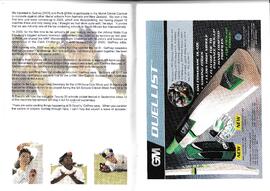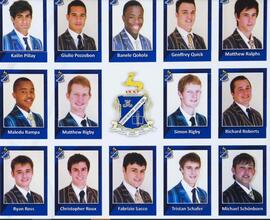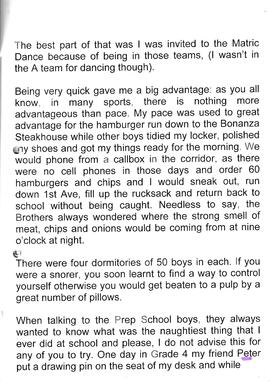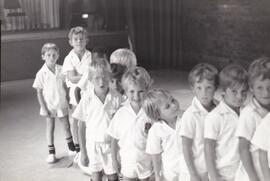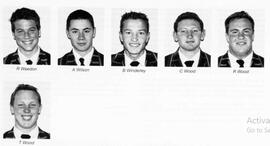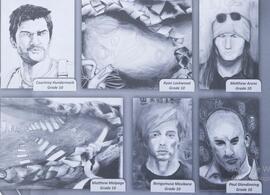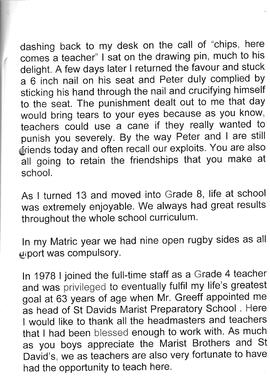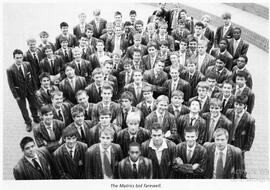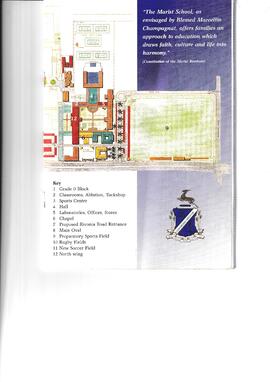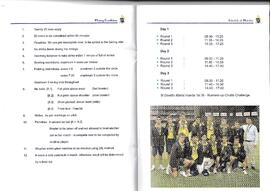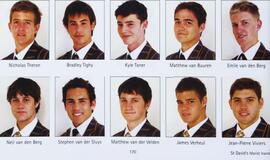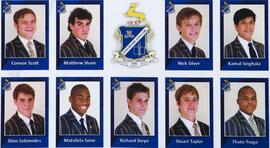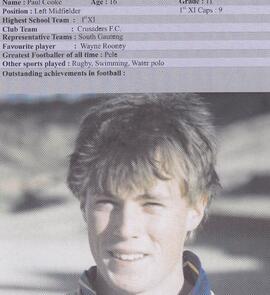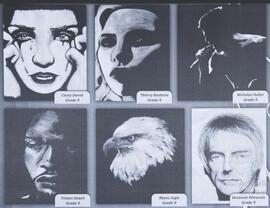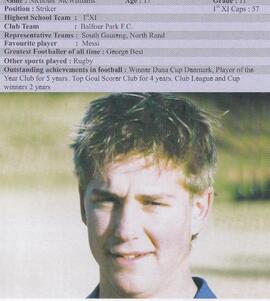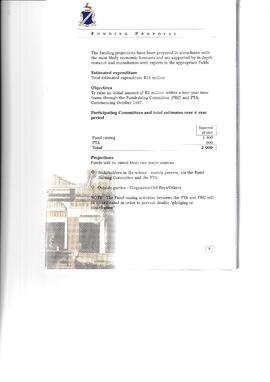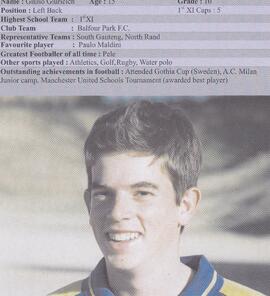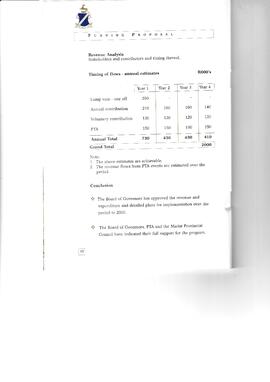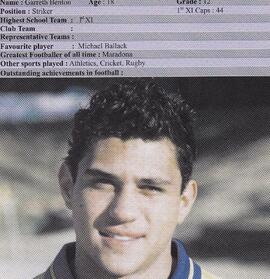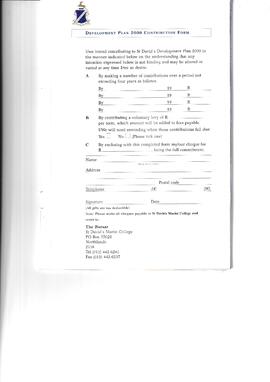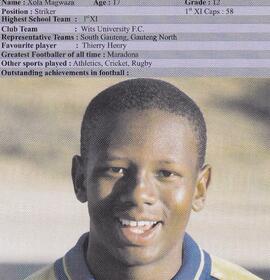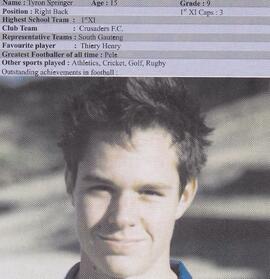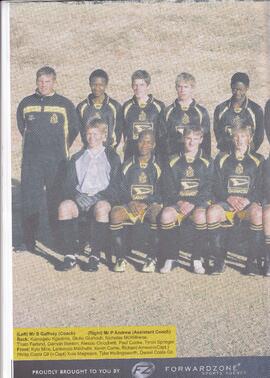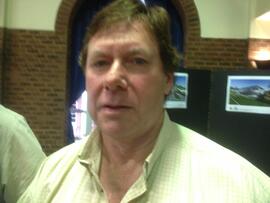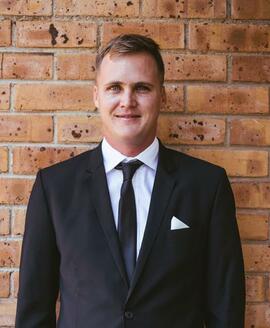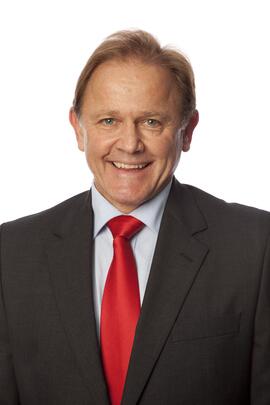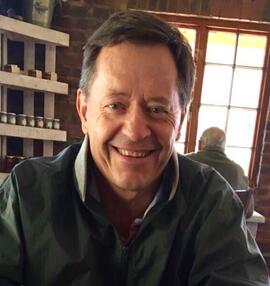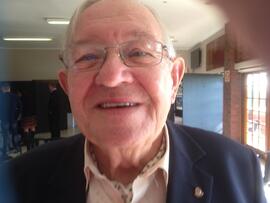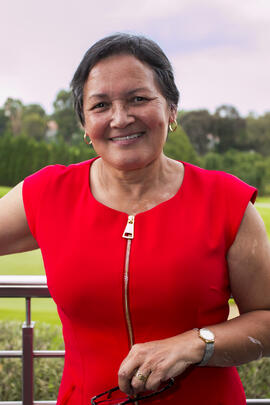Interview with Billy (William) Williams – 1955/ Henry Kool and Fred Hoppert
Billy came to Inanda from Koch Street in 1941 – standard 4, as a boarder, boarding at Koch Street until
1943 when boarding opened at Inanda. The boys were taken to see the school’s building in progress in
1940 and Billy recalls climbing up a gum tree and tying a handkerchief there.
Henry (Hendrik) Kool also came to Inanda in 1941 as a boarder and matriculated as a prefect in 1949.
standard 4 was the highest class at the time and went up each year until the matric class, standard 10, was
reached. He remembered that the sports field was still raw and sloping downwards. This was eventually
bulldozed into two levels.
Fred Hoppert joined Inanda in 1942 as a day boy and left in 1954 having become a boarder in standard 8.
More day boys joined the school from 1942 onwards.
In 1941 Br Thomas, the principal of Koch Street ,went with all the boys to Inanda together with Br Charles
and Br Jordaan. They caught the first bus from Johannesburg Park Station. It was bright yellow and a
single decker with a driver called Scottie who drove them all the way to the school. When the bus
eventually “died” the boys had to catch a trolley bus to Rosebank and then walk from Rosebank to school –
1 ½ miles.
Billy remembers that the classes at Inanda were relatively small in comparison with 21 up to 35 boys in a
class whereas at Koch Street there were 45 at least. There were four houses as now – Osmund, College,
Benedict and The Bishops.
It was during the war years and there was no bread except brown bread, no butter but peanut butter and
apricot jam. There were tables of 6 in the dining hall with 6 small slices of margarine at each table and the
chap at the end of the queue always ended up with the smallest slice or the fraught piece The food was
generally good but cups were difficult to get hold of and beer bottles were cut off, the edges bevelled and
used instead of cups.
The Catholic boys didn’t have as much study time as the non-Catholics as they had to go to mass every
day. When the Catholics had retreat they all joined in as they then didn’t have to go to school. The standard
1 to 5 teachers were lay teachers - standard 1 – Mrs Sturton; 2 – Mrs Brophy; 3 – Mrs Hoare; 4 – Mrs
Kempster who was a tiger; 5 Mr Bishop; 6 Br Benedict; 7 – Br Bartholomew; 8 – Br Aquinas who was
severe; 9 – Br Ephraim; 10 – Br Edwin and Br Pius was the beekeeper and gardener.
The soccer fields were initially just graded and consisted of red sand and small stones. The swimming pool,
25 yards in length was the best in Johannesburg at the time. The first swimming gala and athletics meeting
were held in 1944. Henry remembers swimming the breaststroke and coming dead last.
The school bought a plot below the swimming pool and the house there became the sick bay and living
quarters for the brothers. The boys were “invited” to plant grass on the field there.
Initially there was no rugby as the school didn’t have the grounds and the sport was started in 1947 and
played at the Wanderers. The brothers had to teach the boys how to fall as none of them wanted to! In a
game of rugby against Helpmekaar, Billy remembers Inanda being beaten handsomely and Henry was a
prop.
The boys started playing hockey but smashed half the sticks the first time they played and the remainder
the second time. Needless to say hockey was cancelled.
Billy played cricket against St Henry’s in Durban and the boys in the team were farmed out to families to
stay overnight. Billy recalls being in a photo with a soccer shield – U 13’s team.
On Sunday afternoons the boarders used to go walking for miles through accacia trees and sandy soil
(hence the eventual name of the area as Sandton). Billy ate too much fruit on one of these walks and Henry
piggy backed him home until they were offered a lift.
The three boys, Billy, Henry and Fred were all Anglicans but were never treated any differently to the
Catholic pupils and were never pressured to become Catholic. They used to go to St Martin’s in the Veld
church on Sunday mornings and walked there and back. They walked past many little plots and the boys
used to collect fruit on the way back and then hide it in holes next to the barbed wire fence.
There was a small room underneath a staircase where sporting equipment, soccer balls, dubbin etc were
kept and Billy was in charge, mending the balls and sewing and lacing them up. There was a mark on the
wall, he had to drop the ball and it had to bounce to the second level before it was declared OK. He oiled
cricket bats with linseed oil and replaced the rubber on the handles
Billy recalls bunking out on three occasions climbing down the drainpipes into the swimming pool area and
walking to Rosebank where the boys used to get a trolley bus into town and go to Phillip’s Cafe. For half a
crown they could order a mixed grill and buy a packet of CTC or Flag cigarettes. Afterwards they would
walk all the way back to school. One particular bunch were caught and expelled but eventually allowed
back with a warning.
Billy was unable to complete his matric at Inanda leaving in 1945, standard 7, as his father was ill and he
had to go home to run the family farm. He did however complete his matric by correspondence.
Two of the boys, Felix Sullivan and Stan Silcock became brothers but later withdrew.
On leaving school, Billy ran the family farm and matriculated JCE via correspondence. His father died in
1952 and he continued with the farming, mainly dairy. The farm was located between Grasmere,
Walkerville and De Deur and he ended up being a big supplier to cheese manufacturers. Billy was voted
Farmer’s Weekly, dairy farmer of the year for several years. His farm was the highest milk producer for 3
years with his youngest heifer supplying the highest yield. He ran two other farms as well, one which now is
Orange Farm, he rented it and eventually bought it. Grinaker wanted the farm and bought it from Billy for
R500 000 and Grinaker later sold it to the nationalist government for R7m. The minister of planning at the
time was Fourie.
Henry was awarded scrolls for rugby and merit, gaining his colours and was made a prefect. He went into
banking as he was not called up, starting in Barberton, onto Vereeniging, Graskop, Barberton, Westonaria
and Florida eventually ending up at the head office of Standard Bank in the money market retiring at the
age of 60..
Fred went onto Natal University and studied for BSc Agriculture as he originally wanted to be a vet. He
joined 3M, then Ropes and Mattings (now Nampak) then on to Amalgamated Packaging Industries, then
Allnet, became MD of Olefan Textiles International and finally joined Bidvest where he retired and has
always lived in Johannesburg.
They are all still good friends. Billy’s youngest brother was at Inanda from 1947 and Billy supported him
through school after their father died. Billy fathered 5 children, 3 sons and 2 daughters. The eldest son
attended Settlers and the other two boys went to Potch Boy’s High.
Henry and Fred both fathered 3 daughters each
JLE March 2015.

